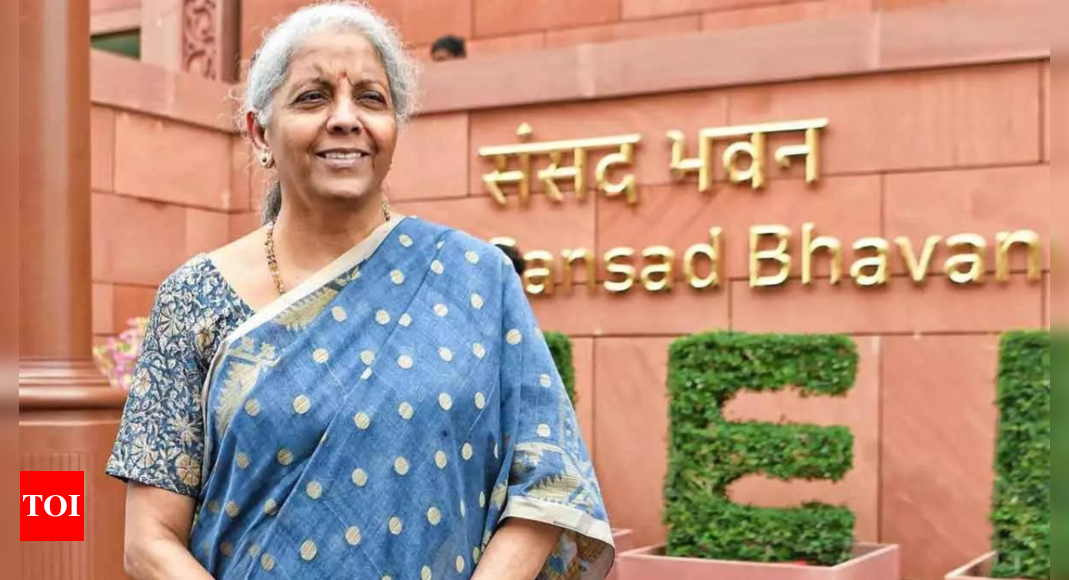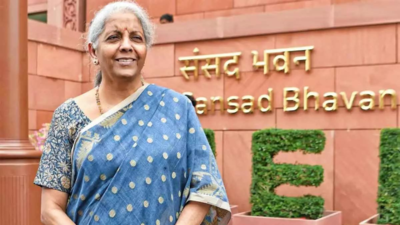NEW DELHI: FM Nirmala Sitharaman is set to move a 622-page Income Tax Bill, with 536 clauses, on Thursday to repeal the current 64-year-old law that runs into 823 pages and has 819 sections. The draft legislation, with simpler language, seeks to do away with “assessment year” and sets a definition of “tax year” that’ll be aligned with financial year.
There are no deep structural changes to overhaul existing provisions or a change in deadline for filing. Several experts said the focus is on making the law easier to grasp which will reduce litigation.
At several places, the Bill has tables related to TDS provisions, presumptive tax rates and time limit for assessment, aimed at giving clarity. Besides, some formulas have been included. “Notwithstanding” has been replaced with “irrespective of anything” at several places, tax experts said. Archaic and convoluted language has been largely dropped.
While the bill is likely to be referred to a parliamentary panel, the new law is proposed to be implemented from next April, although Sitharaman had said the process of consultation will be followed.
“The language is simpler. One excellent change is replacement of the concept of assessment year and previous year with tax year. While innumerable provisos and explanations in the existing Act have been eliminated, various conditions attached to each exemption or deduction continue, but are couched in simpler language,” said Gautam Nayak of CNK Associates, a Mumbai-based CA firm.
Clarity on crypto, agri income in new I-T Bill
The Income Tax Bill will seek to bring all provisions related to areas such as salaries and perquisites together, making it easier for taxpayers to understand.
“In the earlier law, there were multiple cross references between sections and rules, which often led to complications for taxpayers. In the new bill, the number of proviso and explanations have been substantially reduced and the references to rules and other sections have been curtailed. This will ensure a taxpayer will be able to gain a sensible understanding of the section by reading the section itself and they do not need to refer to other rules and sections. Further, the old law was amended several times over 60 years and hence, there were ample references to redundant sections, previous dates and years, which have been removed now,” said Amit Maheshwari, tax partner at consulting firm AKM Global.
The bill proposes a taxpayer charter, something that has been rolled out but has failed to provide any firm commitments by the department. It will define crypto assets for the first time, while doing away with definitions such as “fringe benefit”.
Nayak pointed out there is a change in the definition of agricultural income with income derived from saplings or seedlings grown in a nursery also included now, accepting the judicial pronouncements in this regard. “In quite a few places, the bill clarifies the position better than the existing law – for instance, in stating when a person would be not ordinarily resident in India,” he added.
Maheshwari said the new section mandating that the Dispute Resolution Panel (DRP) must provide detailed directions, explicitly stating the points of determination, its decision, and the reasons behind it marks a significant shift from the earlier provision, which lacked clarity on the manner of issuing DRP directions. “DRP orders will now be well-reasoned and adequately explained, ensuring transparency and reducing reliance on past rulings. This will improve quality of dispute resolution.”
“The bill’s primary objective is to simplify the tax laws, ensuring these are more transparent, easier to interpret and taxpayer friendly. By replacing complex provisions with clearer provisions, it aims to reduce legal disputes and encourage voluntary tax compliance,” said Rohinton Sidhwa, partner at Deloitte India.




